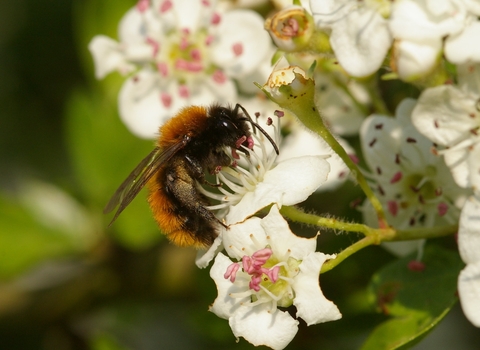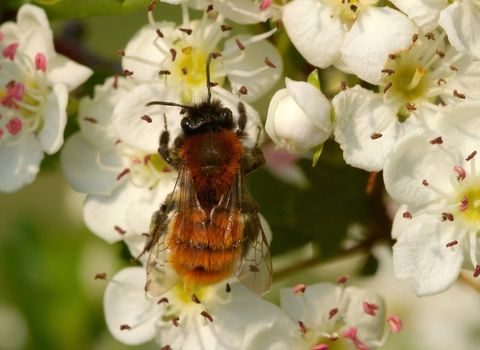
Will George

Will George
Tawny mining bee
The Tawny mining bee is a furry, gingery bee that can often be seen in parks and gardens during the springtime. Look for a volcano-like mound of earth in the lawn that marks the entrance to its burrow.
Scientific name
Andrena fulvaWhen to see
April to MaySpecies information
Category
Statistics
Length: up to 1.2cmCommon.
